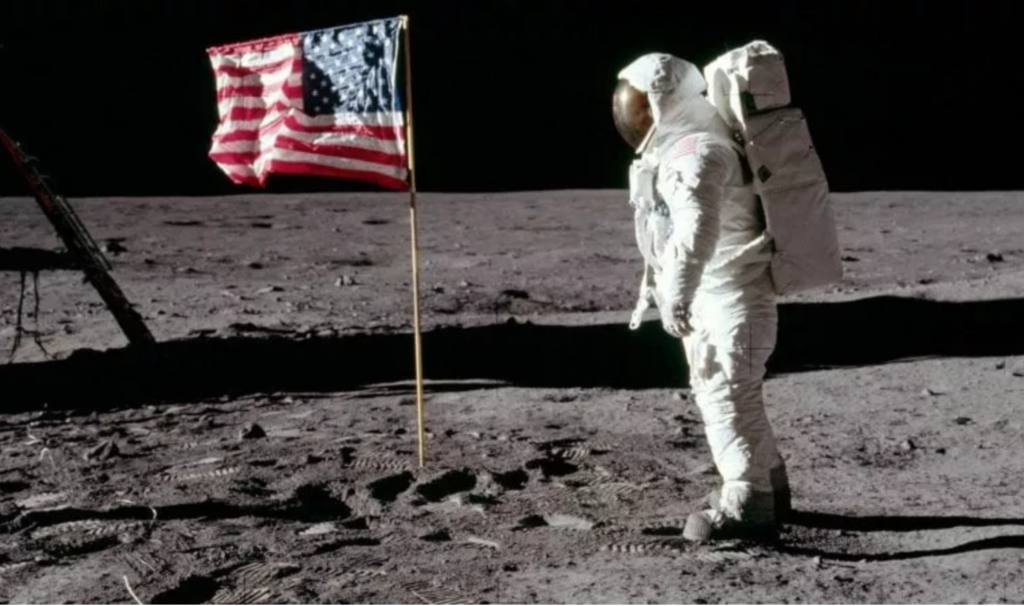
Half a century ago, on July 20, 1969, NASA’s Apollo 11 mission put a human being on the Moon for the very first time. As political as the motivation for doing this was, Neil Armstrong’s moonwalk remains a watershed moment in the world’s collective history, the realization of a dream that billions of stargazers have shared for thousands of years. This week, those in Tuscany will have the opportunity to celebrate this giant leap for mankind at a variety of events, ranging from exhibitions and scientific discussions to musical performances.
Explore the History of Space Travel
Take a break from exploring Pisa’s beautiful architecture to see “On the Moon and Beyond” at the Palazzo BLU. This exhibition by National Geographic details human achievement in space travel, featuring stunning images of the vast cosmos in which we reside, and will run until July 21.
Photos of the scientists and astronauts behind travels into space accompany images of the various planets, moons, and deep-space mysteries, a treasure trove of National Geographic’s timeless collections. In addition to the breathtaking pictures, there are also scaled models of rovers, satellites, and space stations, as well as videos exploring the intricate machinery required to expand the knowledge of our known universe. This multifaceted study of our fascination with space spreads across several rooms, each focusing on a different aspect of our knowledge of the galaxy; past, present, and future.
From the beginnings of space exploration to the first lunar landing, visitors can experience iconic moments of the earliest ventures and learn the history behind the space race, all the way up to Neil Armstrong’s momentous moonwalk. After marveling at this feat, guests can see how humanity has continued to explore our solar system since, starting with Mars. The Red Planet is still a main research site to investigate the possibility of extraterrestrial life, with rovers still analyzing the surface.
In an amazing tour of our part of the Milky Way Galaxy, visitors can examine the planets of our solar system, their many moons, and the comets that make their way through our area code. Guests can learn about the brave men and women who undertook missions to discover the unknown, as well as the various triumphs and tragedies they experienced in the pursuit of space exploration. Numerous models of satellites, rockets, and probes built by multiple nations track how the technology developed, and the breathtaking shots of deep space taken by the Hubble Telescope serve as a humbling reminder of humanity’s place in the larger universe.
Finally, visitors can examine the impact our development has had on the planet, and even catch a glimpse of the future, when space travel will be used for recreation and colonization. “On the Moon and Beyond” is an amazing exhibition that puts visitors on a space walk through the mysteries of the universe. (cassandra yeam)
The Luna50 Festival
Beyond the show at Palazzo BLU, Pisa has made the Moon landing its focus this month with the Luna50 Festival, organized by the municipality together with the University of Pisa. The city of Galileo has scheduled a calendar of daily (and mostly free) events that began on July 4 and will continue until the anniversary on July 20. They are divided into five categories: The Moon and Science; Words and Music; Art and Cinema; Astronomical Observation; and Events for Children and Families.
Every night this week offers something new to learn or explore, with each event usually starting around 9 pm. Monday features a concert called “The Moon and 18th Century Music,” evidence of how the celestial body has inspired artists for centuries, as well as a unique opportunity to experience music seldom performed. On Tuesday, July 16, as if the universe wishes to mark the occasion, there will be a partial lunar eclipse, and the University Physics department has constructed observation areas along Pisa’s city walls. Seats in these areas cost €5, and reservations are recommended.
The next two days both feature scientific talks in the Auditorium Cittadella Galileiana, with two discussions by University of Pisa faculty being held back-to-back each night. On Wednesday will be “From the Moon to Antarctica: Lunar Meteors in the Ice” and “Dating the Moon,” while Thursday the venue will host “The Influences of the Moon: How Much is True?” and “The Moon and Moons: Planetary and Satellite Systems.” Friday marks a shift to the social and historical, as Professor of Modern History Arnaldo Testi will lead a talk on “The American Flag on the Moon.”
The Palazzo BLU will simultaneously host their own event on Friday night with National Geographic, designed to evoke the Apollo 11 mission. Held in the complex’s gardens, the free talk on the Apollo 11 mission by Marco Cattaneo, a National Geographic Italia editor, Paolo D’Angelo, a journalist specialized in astronautics, and Luca Perri, a PhD candidate in astrophysics, starts at 9:30 pm. The museum will also remain open until midnight on Friday, giving visitors an extra chance to explore its space travel exhibit before it finishes.
Saturday, the anniversary date, will be one to remember for children attending the festival. Starting at 6 pm, a parade of characters from Star Wars will lead to the Cittadella Galileiana, where a “Padawan School,” a LEGO spaceship workshop, and a Virtual Reality Moon park will run for the evening. The night will cap off with a final scientific chat, “Failure is Unthinkable: Man, the Computer, and the Moon,” at 9:30 pm. (alex harrison)








